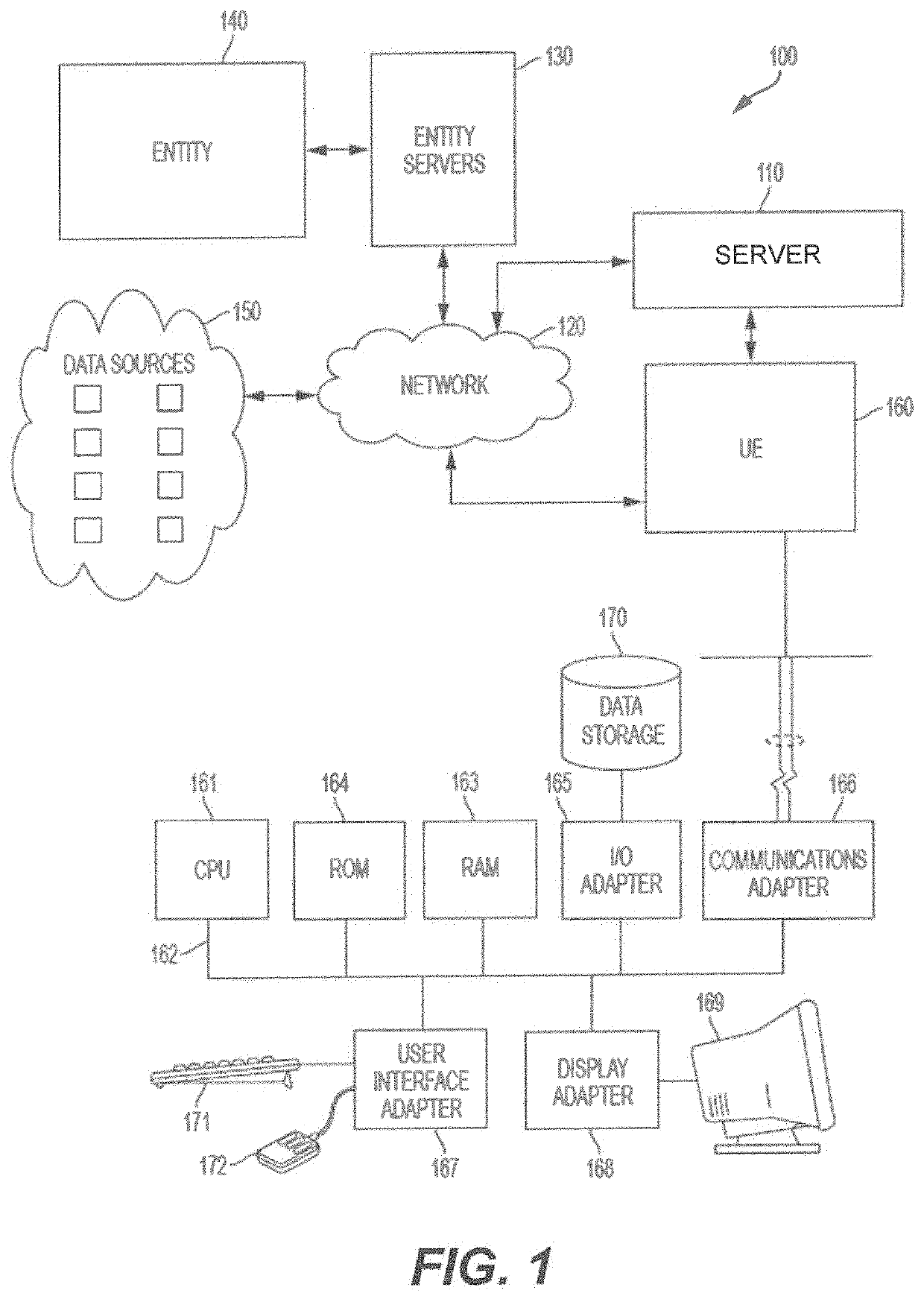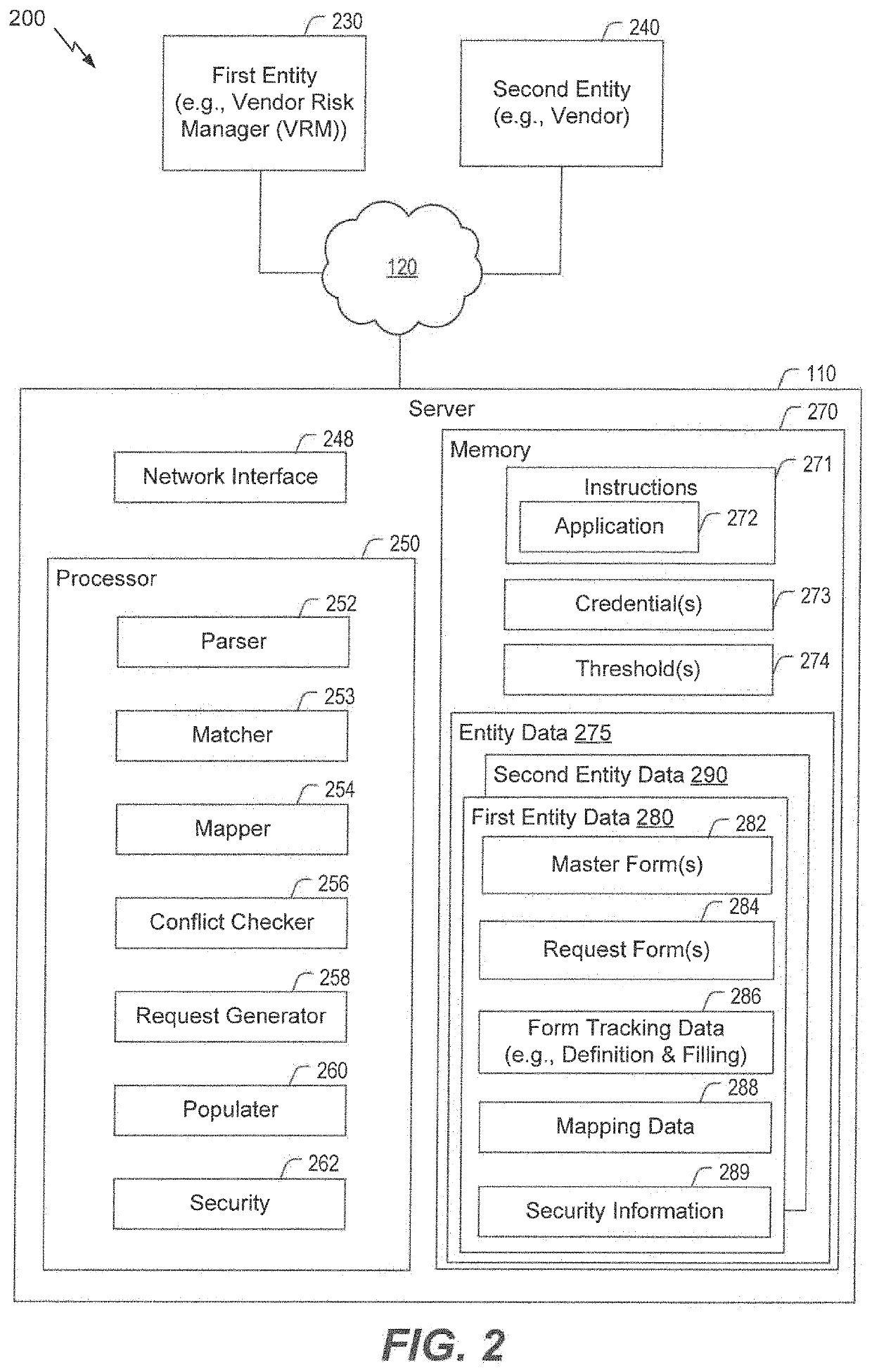Inquiry response mapping for determining a cybersecurity risk level of an entity
a cybersecurity risk and inquiry response technology, applied in the field of cybersecurity technology, can solve the problems of increasing complexity of cybersecurity risks for entities such as corporations, affecting the cybersecurity risk of corporations, and difficult management of cybersecurity risks, so as to reduce future data conflicts, improve response mapping, and maintain response consistency
- Summary
- Abstract
- Description
- Claims
- Application Information
AI Technical Summary
Benefits of technology
Problems solved by technology
Method used
Image
Examples
Embodiment Construction
[0032]Inventive concepts utilize a system to determine a cybersecurity risk level of an entity by mapping responses to a plurality of inquiry sets directed to the entity. Once the risk level of the entity is determined, the determined risk level can be used to evaluate how it influences the cybersecurity risk levels of the entity's business partners. From another point of view, an entity can map responses provided in response to a plurality of inquiry sets directed to the entity's own partners to assess its overall risk level, i.e., to the extent it is influenced by the cybersecurity risk levels of the responding business partners. Based on an identified cybersecurity risk level of an entity, a business partner of the entity can modify one or more aspects of the business partner's relationship with the entity to reduce or eliminate a negative impact of the entity on the business partner. For example, when the cybersecurity risk level of an entity is particularly bad and exposes a bu...
PUM
 Login to View More
Login to View More Abstract
Description
Claims
Application Information
 Login to View More
Login to View More - R&D
- Intellectual Property
- Life Sciences
- Materials
- Tech Scout
- Unparalleled Data Quality
- Higher Quality Content
- 60% Fewer Hallucinations
Browse by: Latest US Patents, China's latest patents, Technical Efficacy Thesaurus, Application Domain, Technology Topic, Popular Technical Reports.
© 2025 PatSnap. All rights reserved.Legal|Privacy policy|Modern Slavery Act Transparency Statement|Sitemap|About US| Contact US: help@patsnap.com



